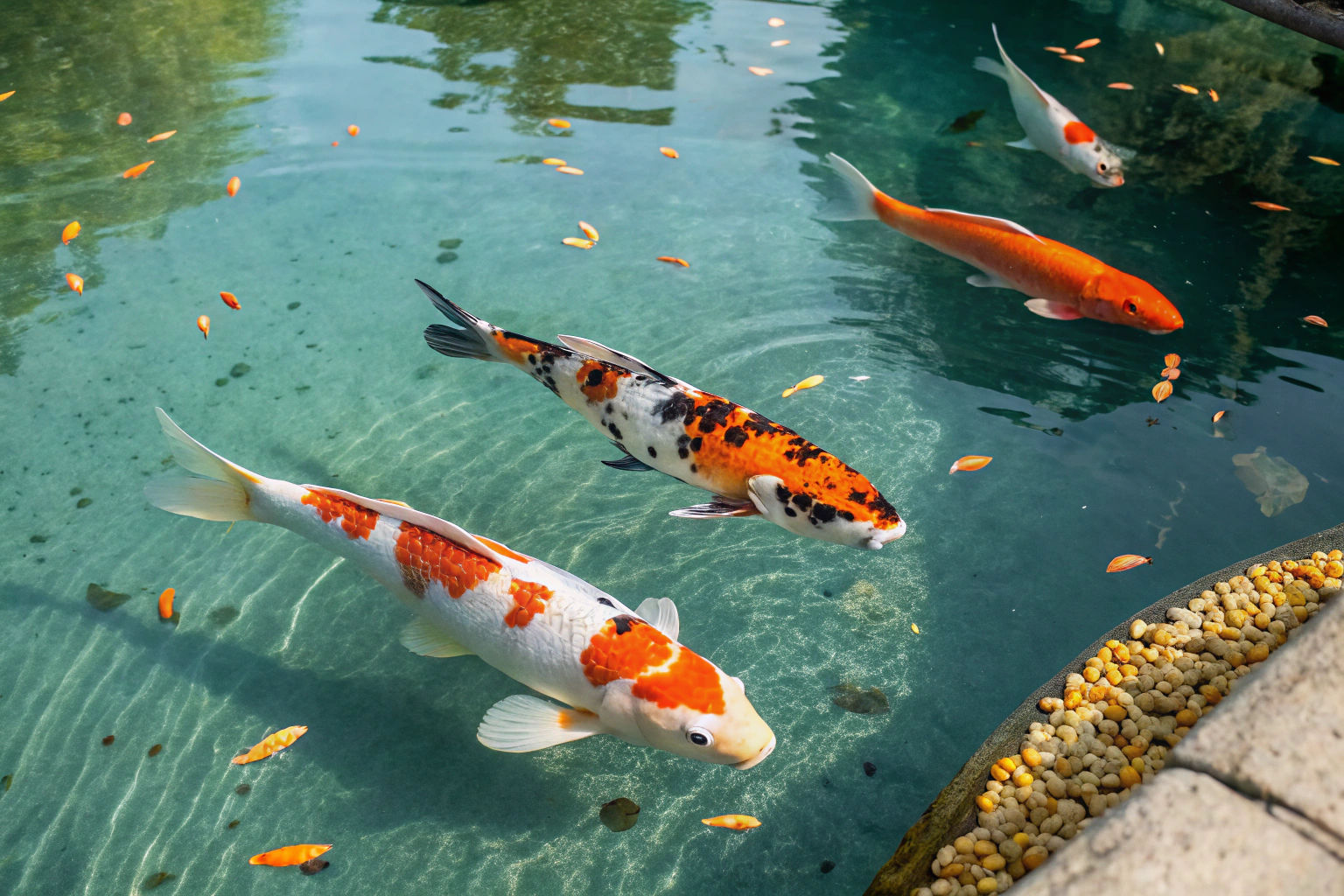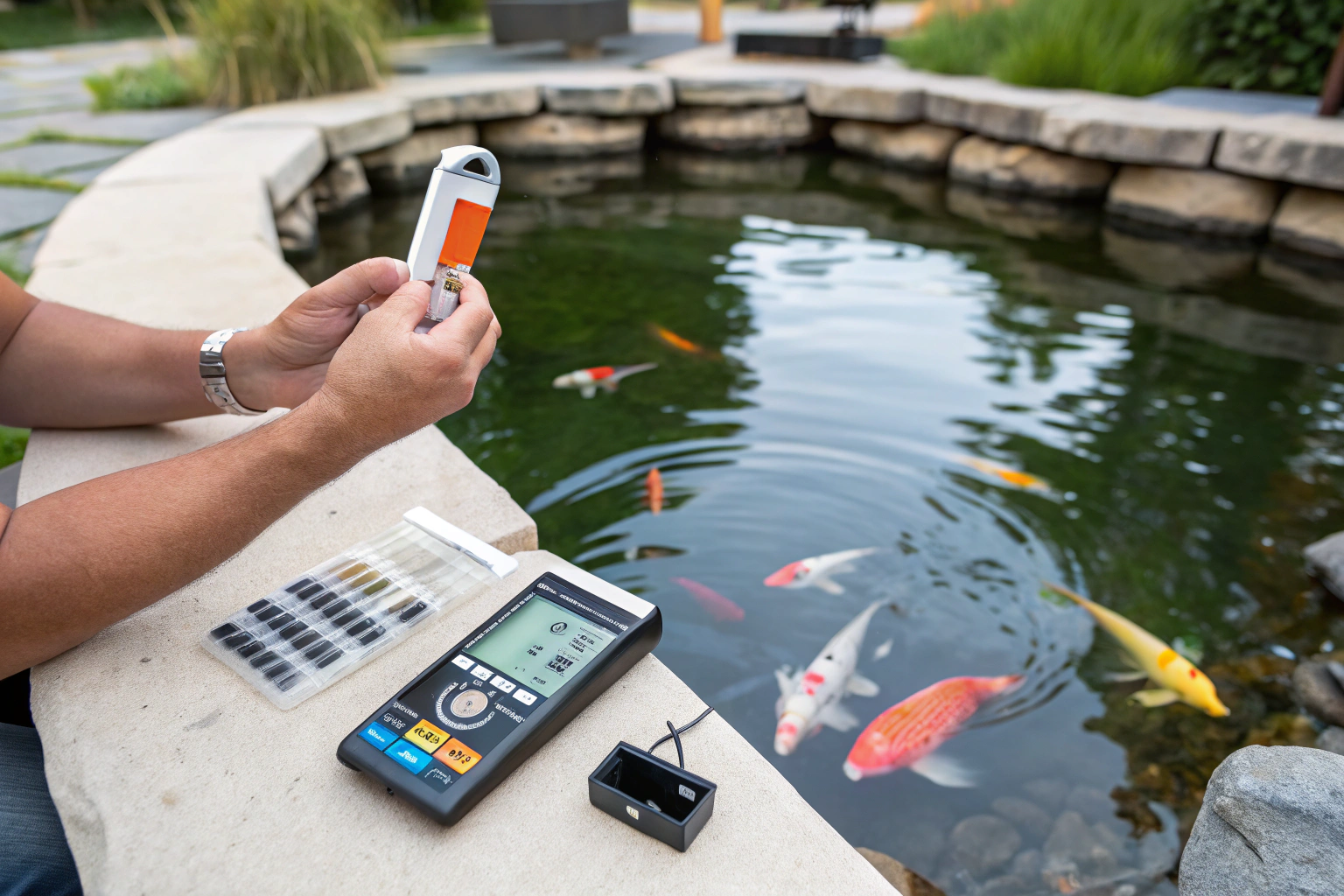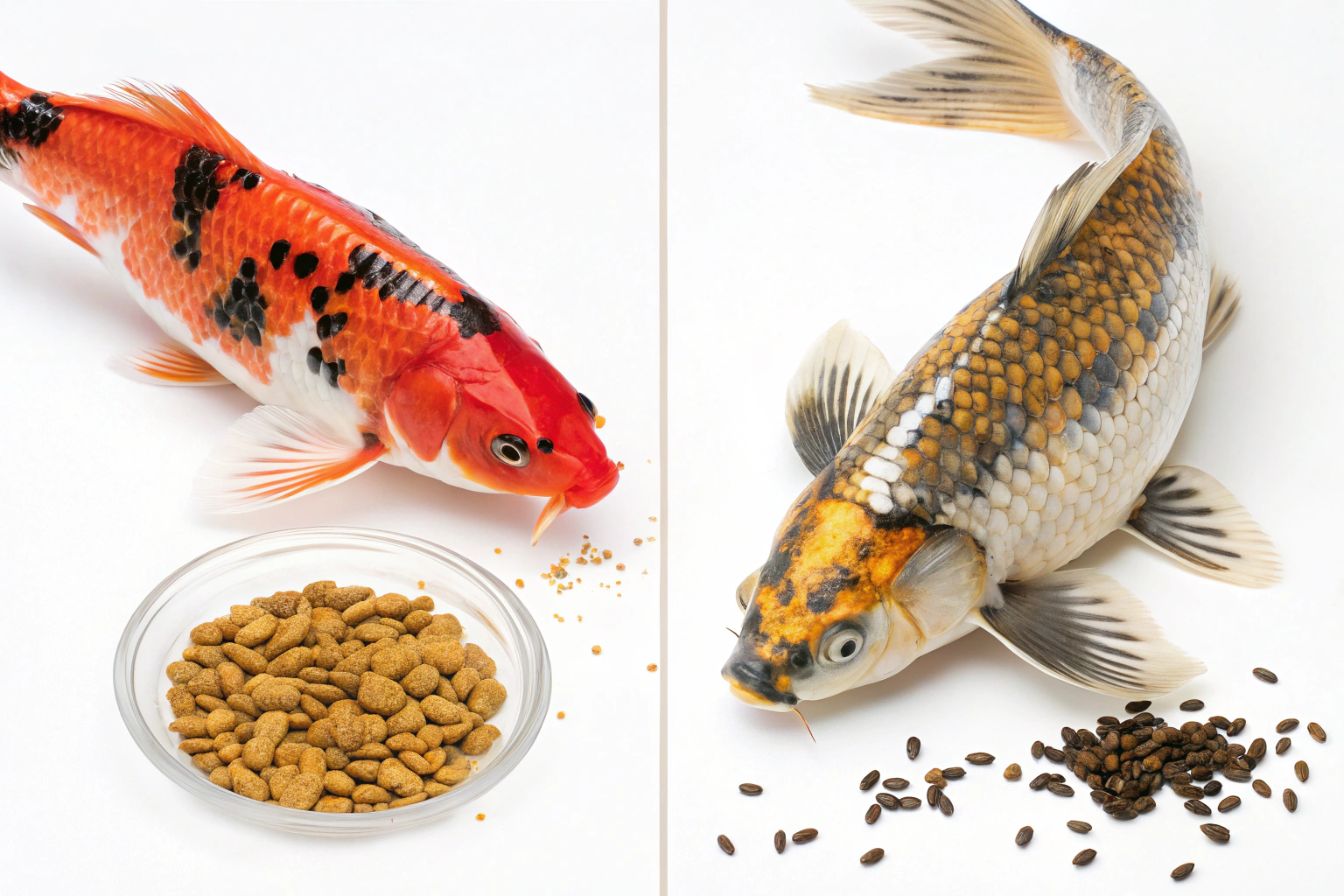Why Won’t My Koi Fish Eat Their Food and How Can I Fix This Problem?
This post may contain affiliate links.
Watching your beloved koi fish refuse their food can be both frustrating and concerning. As a koi enthusiast, you’ve likely invested significant time and resources into creating the perfect pond environment, only to find your fish turning away from their meals. This comprehensive guide will explore the common reasons behind koi feeding problems and provide actionable solutions to restore your fish’s healthy appetite.

Understanding Normal Koi Feeding Behavior
Before diving into problems, it’s essential to understand what normal koi feeding behavior looks like. Healthy koi are typically eager feeders who will approach the surface when they see their caretaker approaching. They should consume their food within 5-10 minutes, showing active swimming patterns and competitive behavior during feeding time.
Koi fish are naturally opportunistic feeders in the wild, constantly searching for food sources throughout the day. In captivity, they quickly learn feeding schedules and often display excitement when feeding time approaches. Any deviation from this normal behavior warrants investigation.
Primary Reasons Why Koi Fish Stop Eating
Water Quality Issues
Poor water quality ranks as the leading cause of feeding problems in koi ponds. When water parameters fall outside acceptable ranges, koi experience stress that directly impacts their appetite. Critical factors include:
Temperature Fluctuations: Koi are cold-water fish, but sudden temperature changes can shock their system. Optimal feeding temperatures range between 59-77°F (15-25°C). Below 50°F (10°C), koi naturally reduce their food intake as their metabolism slows for winter dormancy.
Ammonia and Nitrite Poisoning: These toxic compounds, produced by fish waste and decomposing organic matter, can quickly become lethal. Even low levels cause stress and appetite loss. Regular testing with quality water testing kits is essential for maintaining a healthy pond ecosystem.
Oxygen Depletion: Insufficient dissolved oxygen levels force koi to conserve energy, leading to reduced feeding activity. This commonly occurs during hot summer months or in overcrowded ponds with inadequate aeration systems.
pH Imbalances: Koi thrive in slightly alkaline water with a pH between 7.0-8.5. Extreme pH levels can damage their gill function and digestive system, resulting in feeding refusal.
Seasonal and Environmental Factors
Koi feeding behavior naturally varies with seasonal changes. Understanding these patterns helps distinguish between normal seasonal adjustments and concerning health issues.
Winter Dormancy: As water temperatures drop below 50°F, koi enter a state called torpor. Their digestive systems slow significantly, and they may stop eating entirely for several months. This is completely normal and attempting to force-feed during this period can cause serious health problems.
Spring Awakening: When temperatures begin rising in spring, koi gradually resume feeding. However, their digestive systems need time to reactivate, so initial feeding should be minimal and easily digestible.
Breeding Season Stress: During spawning season (typically spring), both male and female koi may reduce their food intake due to hormonal changes and breeding behaviors.
Disease and Parasites
Various health conditions can significantly impact koi appetite. Early identification and treatment are crucial for preventing serious complications.
Bacterial Infections: Common bacterial diseases like fin rot or ulcer disease can cause systemic illness, leading to appetite loss. These infections often result from poor water quality or injuries.
Parasitic Infestations: External parasites such as anchor worms, fish lice, or flukes cause irritation and stress. Internal parasites affect digestive function directly, preventing proper nutrient absorption.
Viral Diseases: Koi herpes virus (KHV) and other viral infections can cause sudden appetite loss along with other serious symptoms. These conditions require immediate veterinary attention.

Dietary and Feeding Issues
Sometimes the problem lies not with the fish but with the food or feeding practices themselves.
Poor Quality Food: Expired, improperly stored, or low-quality koi food loses nutritional value and palatability. Koi can detect these changes and may refuse substandard food.
Inappropriate Food Size: Food pellets that are too large or too small for your koi’s mouth size can discourage feeding. Adult koi require different pellet sizes than juveniles.
Overfeeding: Paradoxically, overfeeding can lead to reduced appetite as uneaten food decomposes, polluting the water and creating an unhealthy environment.
Comprehensive Solutions for Koi Feeding Problems
Immediate Water Quality Assessment
The first step in addressing feeding problems involves comprehensive water testing. Test for ammonia, nitrites, nitrates, pH, and dissolved oxygen levels. If any parameters are outside acceptable ranges, take immediate corrective action.
For ammonia or nitrite spikes, perform partial water changes (20-30%) daily until levels normalize. Ensure your biological filtration system is functioning properly, as beneficial bacteria are essential for processing toxic waste products.
Installing additional aeration equipment can quickly address oxygen deficiency issues. Consider adding air stones, fountains, or venturi valves to increase surface agitation and gas exchange.
Temperature Management Strategies
Maintaining stable water temperatures requires both monitoring and gradual adjustments when necessary. Install a reliable pond thermometer and check temperatures daily, especially during seasonal transitions.
During extreme weather, pond heaters or chillers may be necessary to prevent dangerous temperature swings. However, avoid rapid temperature changes, as these can shock koi and worsen feeding problems.

Health Assessment and Treatment
If water quality appears normal but feeding problems persist, conduct a thorough health examination of your koi. Look for visible signs of disease such as:
- White spots or growths on the body or fins
- Reddened or inflamed areas
- Clamped fins or unusual swimming behavior
- Excessive mucus production
- Gasping at the surface
For suspected health issues, consult with a veterinarian experienced in fish medicine. Many koi diseases require specific medications and treatment protocols that vary based on the exact condition and severity.
Feeding Practice Optimization
Reviewing and adjusting your feeding routine can often resolve appetite issues. Feed small amounts multiple times daily rather than one large feeding. This approach reduces waste and allows better monitoring of individual fish consumption.
Choose high-quality koi food appropriate for the season and water temperature. Cool-water formulations with easily digestible ingredients work best when temperatures are below 60°F, while high-protein growth formulas support active feeding during warmer months.
Store koi food properly in cool, dry conditions and replace it regularly. Most koi foods maintain optimal quality for 6-12 months when stored correctly, but exposure to heat, moisture, or air can rapidly degrade nutritional value.

Creating Long-Term Feeding Success
Establishing Consistent Routines
Koi thrive on predictable schedules, so establish consistent feeding times and stick to them. Most koi keepers find success with 2-3 small feedings daily during active seasons, adjusting frequency based on water temperature and fish behavior.
Monitor your koi during feeding times to ensure all fish are participating. Shy or subordinate fish may need separate feeding areas or different timing to ensure adequate nutrition.
Preventive Health Management
Regular health monitoring prevents many feeding problems before they become serious. Weekly visual inspections help identify potential issues early when treatment is most effective.
Quarantine new fish before introducing them to your main pond to prevent disease transmission. This practice protects your existing koi population and maintains the stable environment necessary for consistent feeding behavior.
Seasonal Feeding Adjustments
Adapt your feeding strategy to seasonal changes for optimal results. Spring feeding should begin gradually with small amounts of easily digestible food as water temperatures rise above 50°F.
Summer feeding represents peak activity when koi require the most nutrition for growth and energy. High-quality, protein-rich foods support active metabolism during warm months.
Fall feeding preparation helps koi build energy reserves for winter. Gradually reduce feeding frequency and switch to easily digestible formulations as temperatures decline.
Winter feeding should cease completely when water temperatures drop below 50°F. Attempting to feed dormant koi can cause food to rot in their digestive system, leading to serious health complications.
When to Seek Professional Help
While many feeding problems can be resolved through water quality improvements and feeding adjustments, some situations require professional intervention. Contact a qualified aquatic veterinarian if:
- Multiple fish show simultaneous appetite loss
- Feeding problems persist despite optimal water conditions
- You observe additional symptoms suggesting disease
- Fish appear lethargic or show abnormal swimming behavior
- Water quality issues cannot be resolved through standard methods
Professional diagnosis often reveals underlying conditions that aren’t apparent to casual observation. Early intervention can prevent minor issues from becoming major health crises that affect your entire koi population.

Conclusion
Koi feeding problems typically stem from environmental factors, health issues, or feeding practice problems rather than finicky eating habits. By systematically addressing water quality, health status, and feeding routines, most appetite issues can be resolved successfully.
Remember that patience is key when implementing solutions. Koi may take several days or weeks to fully resume normal feeding patterns after addressing underlying problems. Consistent monitoring and gradual adjustments yield the best long-term results for maintaining healthy, actively feeding koi.
The investment in proper koi care pays dividends in the form of vibrant, long-lived fish that provide years of enjoyment. With attention to these fundamental care principles, your koi should return to their natural eager feeding behavior, creating the rewarding pond experience you originally envisioned.
